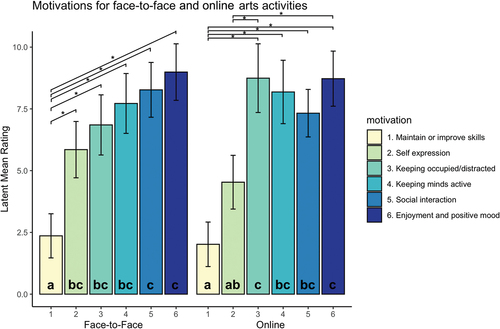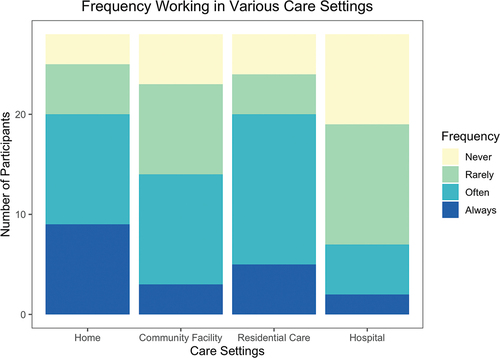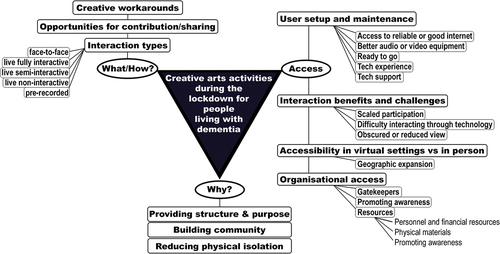Figures & data
Table 1. Number of responses for each geographical region. Respondents could select all geographical regions that applied.
Figure 2. Ratings of the motivations of arts activities face-to-face and online. Asterisks denote significant differences of selected comparisons. All comparisons are reported in Table 3. The letters denote each category’s compact letter display (CLD). When a category shares at least one letter in common with another, (e.g. In the face-to-face setting, 5. Social interaction and 6. Enjoyment and positive mood both have the group letter “c”), this indicates a p value exceeding alpha (0.05). Means that are significantly different from one another do not have a compact letter display in common, e.g. In the face-to-face setting, 1.Maintain or improve skills which has the group letter “a” compared to any of the other categories in the same setting which do not have “a” in their group letters.

Table 2. Type II analysis of effects of deviance with likelihood ratio (LR) chi-square tests.
Table 3. Tukey-adjusted pairwise analysis of individual motivations for face-to-face activities motivations are grouped depending on significant differences found in pairwise comparisons. The “group” letters in the table detail their compact letter display (CLD). When a category shares at least one letter in common with another, e.g. social interaction and enjoyment and positive mood both have the group letter “c”, this indicates a p value exceeding alpha (0.05). Means that are significantly different from one another do not have a compact letter display in common, e.g. The category “maintain or improve skills” which has the group letter “a” compared to any of the other categories which do not have “a” in their group letters.
Table 4. Tukey-adjusted pairwise analysis of individual motivations for online activities. Motivations are grouped depending on significant differences found in pairwise comparisons. The “group” letters in the table detail their compact letter display (CLD).


